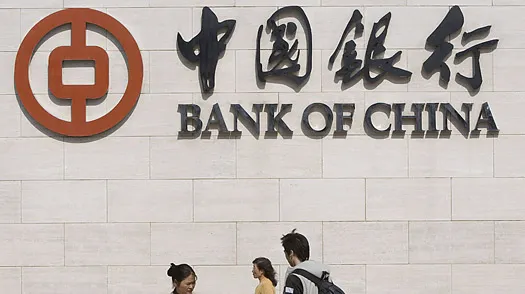
Chinese banks prepare for more bad loans
Chinese banks may see their asset quality fall at some time in the future if the country's monetary tightening policies and liquidity squeezes continue.
"But their non-performing loan ratios will by no means rise to 10 percent," said Guo Tianyong, director of the Banking Industry Research Center with the Central University of Finance and Economics.
S&P said they expect cumulative NPLs in China's banking sector to account for 5 to 10 percent of the sector's total loans over the next three years.
S&P are predicting a difficult scenario in which lending rates go up significantly and government support to project the sector's loans turns out to be negligible.
"Their statements are too sensational," Guo said, citing data and precautionary measures by China's banking regulator as reason.
According to the China Banking Regulatory Commission, the outstanding NPLs of Chinese commercial banks dipped by 300 million yuan or about 46 million U.S. dollars from the fourth quarter of last year to hit 433.3 billion yuan by the end of March this year.
The average NPL ratio for Chinese banks stood at 1.1 percent in the first quarter, almost unchanged from last year, according to quarterly bank reports.
Last month, the CBRC announced stricter regulations for commercial banks in order to help the financial institutions decrease their financial risks.
The CBRC set the minimum capital adequacy ratio for banks of systematic significance at 11.5 percent, while the CAR for banks of non-systematic significance was set at 10.5 percent.
Liu Mingkang, chairman of CBRC, said last December that the regulatory authority expected that Chinese banks' NPL ratios would climb slightly in the future, taking into account factors such as local government-backed financing vehicles, the property market and the restructuring of China's economy.
"An NPL ratio of 2 percent is acceptable and reasonable for a swiftly developing country like China," Liu said.
To deal with possible rises in NPLs amid excess lending, CBRC have raised provision ratios for outstanding loans in the past years.
Even if NPLs rise rapidly in the future, they will still be manageable for Chinese banks with such a high provision ratio, said the Anbound Group, a Beijing-based consulting company.
The rapid pace of bank lending, as well as excessive liquidity, pushed up asset prices and drove inflation up to 5.3 percent by April this year, prompting the Chinese government to adopt a series of measures to curb price hikes.
China's central bank has raised interest rates four times this year, with rates rising from 2.5 percent last October to their current level of 3.25 percent for one-year deposits.
The Chinese government has also imposed harsh restrictions on the property market, where most bank loans have ended up over the last two years.
The full story is available at xinhuanet.




![Lorem Ipsum [ABF 1]](https://cmg-qa.s3.ap-southeast-1.amazonaws.com/s3fs-public/styles/exclusive_featured_article/public/2025-03/a_hand_pointing_to_a_futuristic_technology_5b87c9d0e3_1.png.webp?itok=2w0y1WhS)


![Cross Domain [Manu + SBR + ABF + ABR + FMCG + HBR + ]](https://cmg-qa.s3.ap-southeast-1.amazonaws.com/s3fs-public/styles/exclusive_featured_article/public/2025-01/earth-3537401_1920_4.jpg.webp?itok=WaRpTJwE)







 Advertise
Advertise

